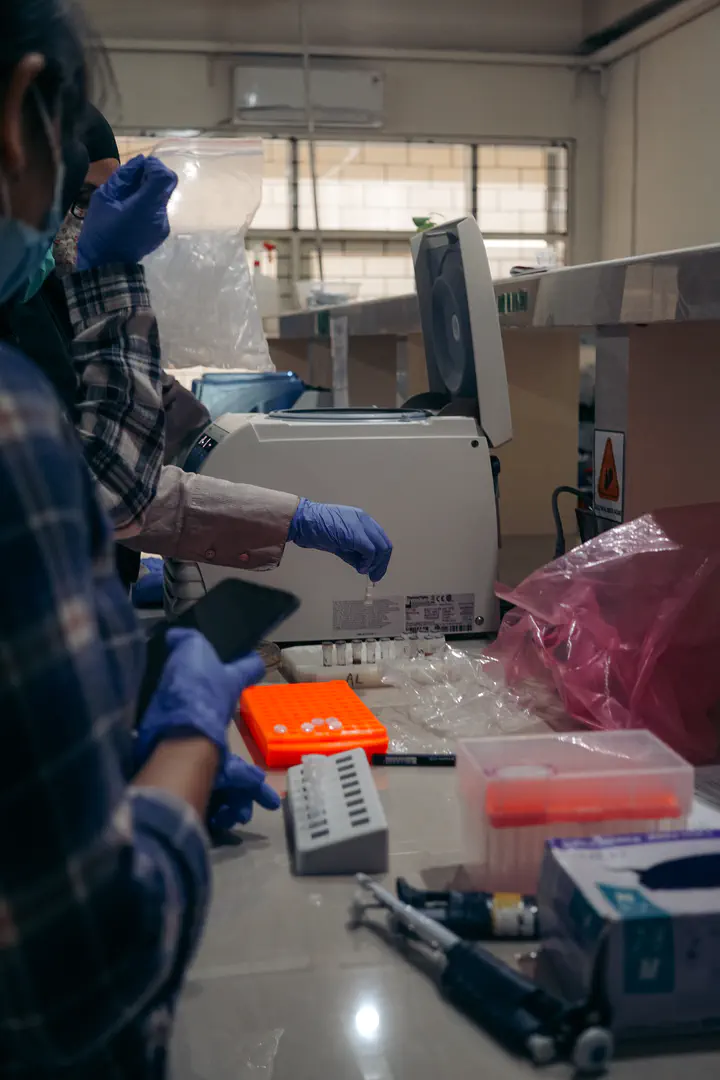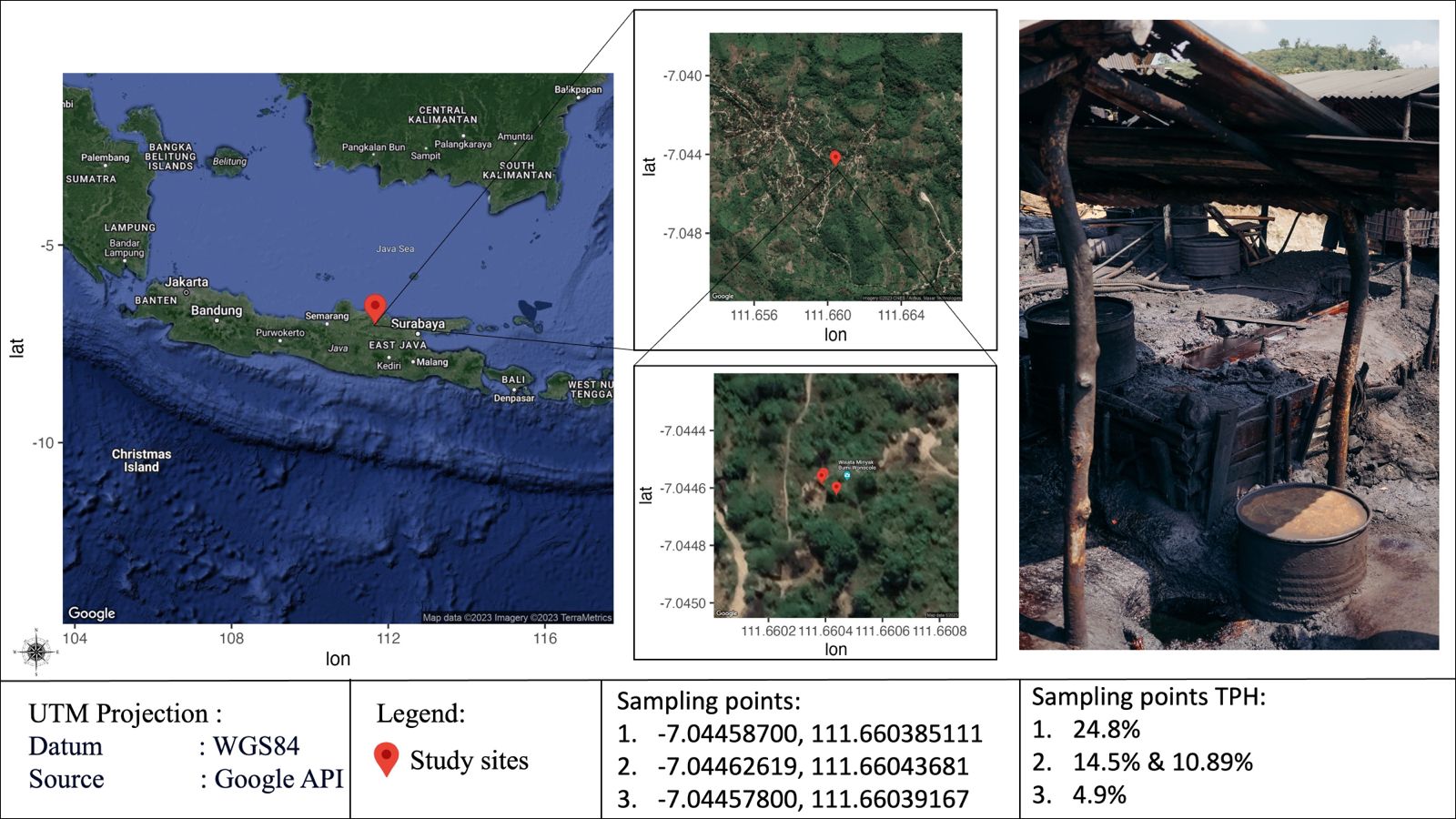Microbiome Profiling
 Extraction Process
Extraction ProcessTraditional oil mining poses negative effects on the environment through pollution with crude oil. One of the traditional mining sites in Wonocolo, Bojonegoro, Indonesia was reported to contaminate the surrounding area with a high level of crude oil. Therefore, this study aims to examine the microbiome profiles of contaminated soil and the rhizosphere of naturalized plants growing at the sites. It was conducted in Wonocolo, Bojonegoro to obtain an insight into the possible remediation efforts of using indigenous hydrocarbon-degrading bacteria and naturalized plants as in situ remediation agents. By application of the technologies such as Illumina sequencing (16s amplicon sequencing) both profiling as well as functional aspects of the microbial communities can be assessed. This project was published in International Journal of Phytoremediation.
The results showed that the soil located close to the oil well-contained a high level of crude oil at 24.8%, and exhibited a distinct microbiome profile compared to those located further which had lower crude oil contamination of 14.15, 10.89, and 4.9%. Soil with the highest level of crude oil contamination had a comparatively higher relative abundance of assA, an anaerobic alkene-degrading gene. Meanwhile, the rhizosphere of the two naturalized plants, Muntingia calabura, and Pennisetum purpureum, exhibited indifferent microbiome profiles compared to the soil. They were found to contain less abundant hydrocarbon-degrading genes, such as C230, PAH-RHD-GP, nahAc, assA, and alkB suggesting that these naturalized plants might not be a suitable tool for in-situ remediation.